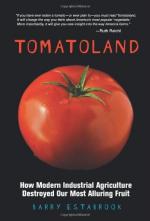|
This section contains 585 words (approx. 2 pages at 300 words per page) |

|
The absence of developed seeds in fruit improves its eating quality. Moreover, it may allow more uniform fruit production in different environments. Seedless fruit occurs when seed (embryo and endosperm) growth is inhibited or the seed dies early, while the remainder of the fruit continues to grow. Bananas and grapes are the most commonly available seedless fruits. Bananas are seedless because the parent banana tree is triploid (3X chromosome sets) even though pollination is normal. Generally, species with a chromosome set number divisible by two (e.g., 2X or 4X chromo-some sets) are capable of seed production while uneven sets of chromosomes (e.g., 3X or 5X) are either sterile or do not produce seeds. After fertilization, banana fruit development can proceed normally but seed development is arrested because of the genetic imbalance. Plant breeders have also produced seedless watermelons (Citrullus lanatus). The first practical system...
|
This section contains 585 words (approx. 2 pages at 300 words per page) |

|


